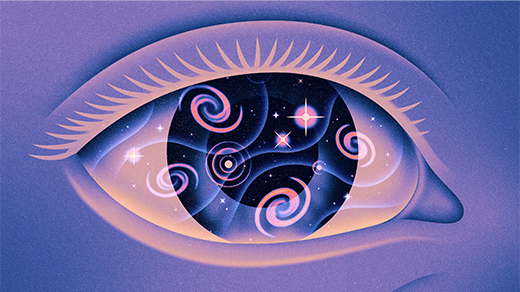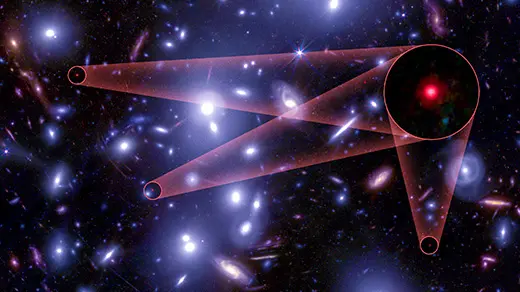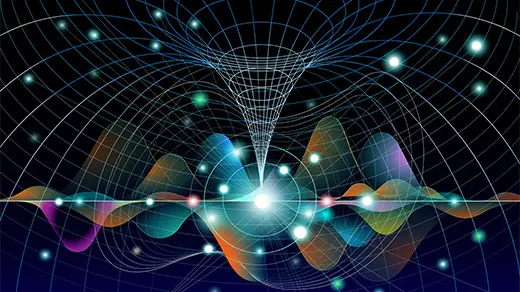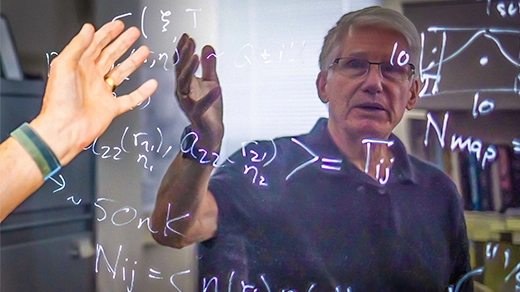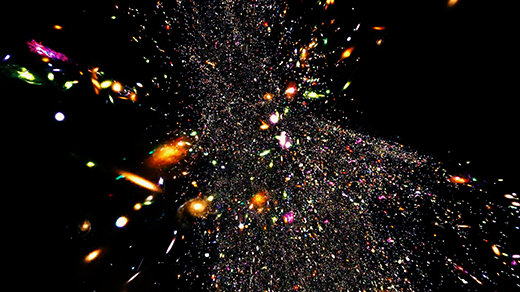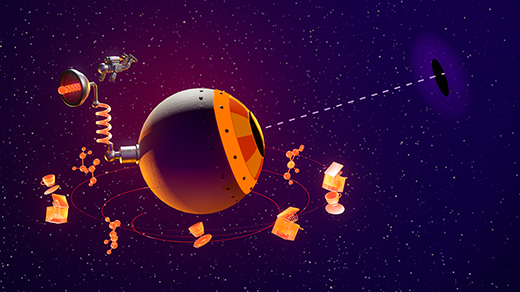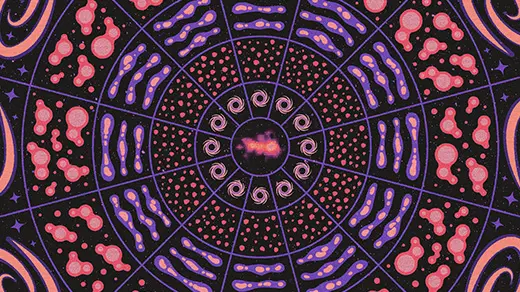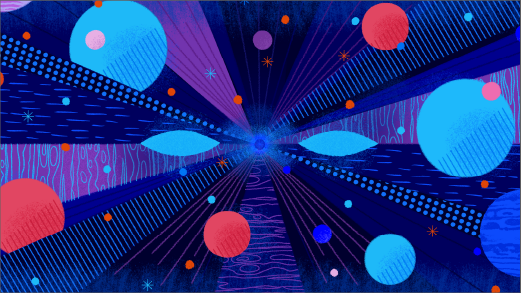What's up in
Cosmology
Latest Articles
Cosmic Paradox Reveals the Awful Consequence of an Observer-Free Universe
Encouraged by successes in understanding black holes, theoretical physicists are applying what they’ve learned to whole universes. What they’re finding has them questioning fundamental assumptions about how physics ought to be done.
A Single, ‘Naked’ Black Hole Rewrites the History of the Universe
The James Webb Space Telescope has found a lonely black hole in the early universe that’s as heavy as 50 million suns. A major discovery, the object confounds theories of the young cosmos.
Why Did The Universe Begin?
In this episode of The Joy of Why, Thomas Hertog discusses his collaboration with Stephen Hawking on a provocative theory arguing that the laws of physics evolved with the universe, and how this could have shaped a cosmos fit for life.
The Biggest-Ever Digital Camera Is This Cosmologist’s Magnum Opus
Tony Tyson’s cameras revealed the universe’s dark contents. Now, with the Rubin Observatory’s 3.2-billion-pixel camera, he’s ready to study dark matter and dark energy in unprecedented detail.
Is Dark Energy Getting Weaker? New Evidence Strengthens the Case.
Last year, an enormous map of the cosmos hinted that the engine driving cosmic expansion might be sputtering. Now physicists are back with an even bigger map, and a stronger conclusion.
Cosmologists Try a New Way to Measure the Shape of the Universe
Is the universe flat and infinite, or something more complex? We can’t say for sure, but a new search strategy is mapping out the subtle signals that could reveal if the universe has a shape.
The Year in Physics
Physicists discovered strange supersolids, constructed new kinds of superconductors, and continued to make the case that the cosmos is far weirder than anyone suspected.
The ‘Beautiful Confusion’ of the First Billion Years Comes Into View
Astronomers are reveling in the James Webb Space Telescope’s discoveries about the formative epoch of cosmic history.
Diminishing Dark Energy May Evade the ‘Swampland’ of Impossible Universes
The largest-ever 3D map of the cosmos hints that the dark energy that’s fueling the universe’s expansion may be weakening. One community of theoretical physicists expected as much.
